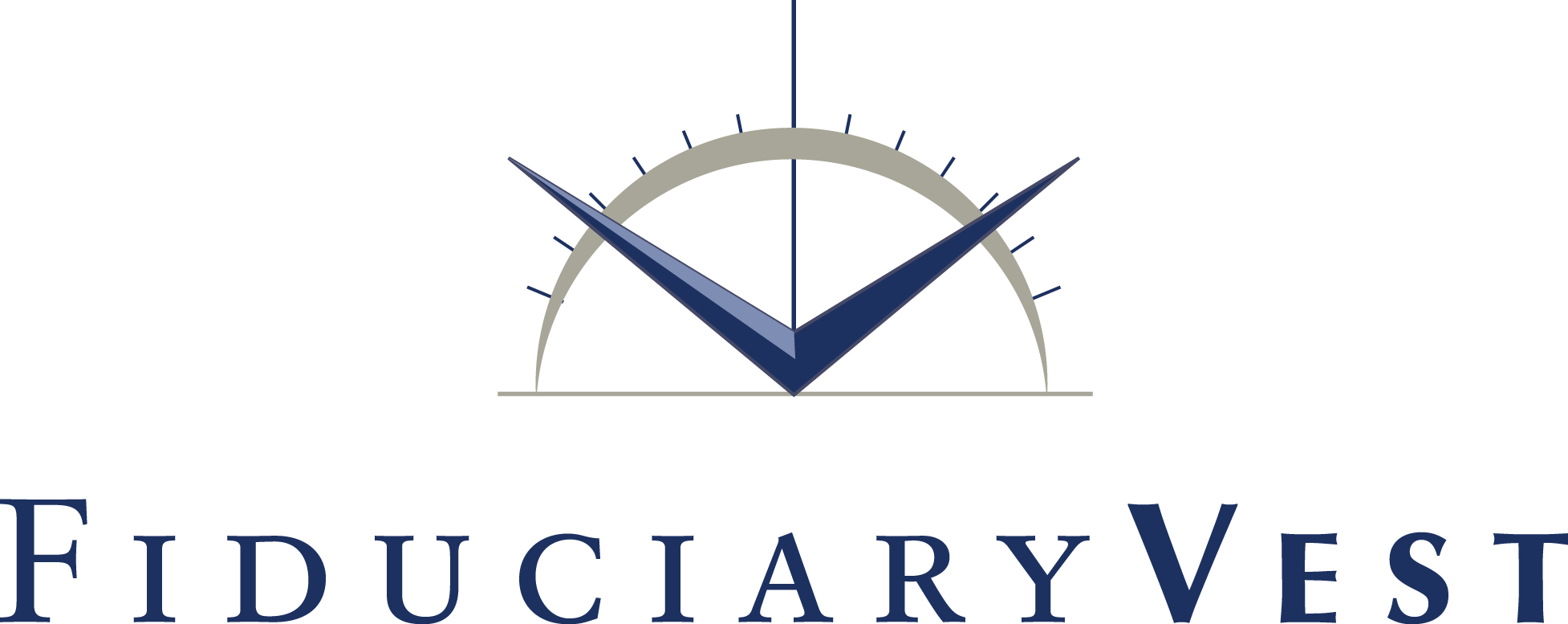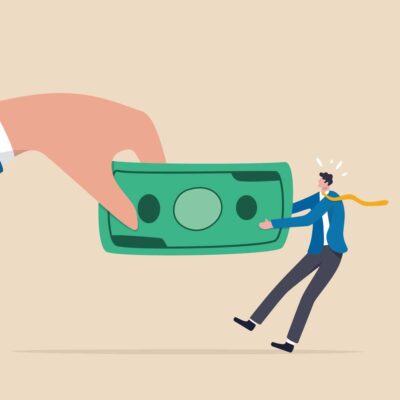
Inflation: The US’s Burglar at Large
History is the particular events from the past which make a present point
Inflation is often touted, by a wide array of pundits, to be a stealthy force that chisels away the economy’s progress. It is a prime enemy of personal household gains, chronically felt by those whose incomes are mostly devoted to food and energy consumption. But perhaps more importantly, it allows most average-income people, and also businesses and governments, to repay their long-term borrowings with cheapened dollars, which has the effect of souping-up the favorable leverage gained by using debt to achieve economic progress that could not be had without it.
This account of US inflation history is a departure from our usual format. It is much longer and is devoted to a single, suddenly very fundamental topic that we think will impact more than a few future years. Although the topic is price-inflation, it is fundamentally about the general pricing impact of currency devaluation. The popular way to measure the strength, or weakness of a particular currency is by comparing its current buying power to that of other world currencies. The deficiency of that calculation is that the “others” are in the same mode….. they are “fiat currencies” which, by agreement among world traders, are recognized as having value…. value that determines the amount of money needed to buy, to sell and to settle debts. A currency is “money” only because the issuing government says it is. Hence, its comparative value in the world is measured by an elastic yardstick; economists stretch the yardstick to fit the size and growth rate of the issuing country’s GDP, but the underlying reality is that fiat currencies are simply commodities. Their current supply and demand determine the changes in their open market value.
As we have observed before in this space, the US Dollar emerged as the world’s “reserve currency” a mere century ago, when the British Empire’s economy and military-might shriveled and took Pound Sterling down with it. The US Dollar’s critically important prime currency status will continue, until it doesn’t. It faces a challenge from cryptocurrencies, but they are vulnerable to country-by-country regulation that could make them suddenly unattractive. The dollar also faces the imposing economic strength of China (which is also dabbling in crypto space), but that country’s one-party, totalitarian government is not likely to win the global trust that is needed to qualify for reserve currency status.
THE NEW NATION, ITS MONEY and RAMPANT INFLATION
When the American Revolution began, the new state governments and the Continental Congress had to find ways to finance the federal government. Having limited ability to tax and borrow, the Congress quickly began printing money.
These currency bills were called “Continentals” and they immediately, drastically fell in value. By the end of the Revolution, they were essentially worthless. The phrase “not worth a Continental” became part of the American lexicon for more than a century. Consumer prices doubled in 1776 and doubled again in both 1777 and 1778. By 1781, prices were up 80-fold relative to the Continental.

ALEXANDER HAMILTON AND GOLD TO THE RESCUE
Beginning In 1787, the tax and debt management systems installed by Treasury Secretary Alexander Hamilton worked well enough to hold off inflation (dollar-depreciation) for 75 years. As the new nation grew and its economy flourished, the Treasury needed to gain “currency credibility”, so that the US dollar could be used in foreign trade transactions. So, in 1837, Treasury beefed-up its fiat currency by putting it onto a “gold standard”; the Treasury added a contract…. a promise (engraved on the currency), to exchange US Dollars for gold at a guaranteed price of 20.66 dollars per troy ounce. The guarantee, assuming it is honored, makes inflation (currency devaluation) impossible. Why gold? Over many centuries and civilizations, gold-backed currencies had proven to be dependable and durable, as a method of maintaining a stable economy. Gold’s physical characteristics are crucial to its suitability as a medium of exchange. It is a beautiful, handy substance that is rare enough to be universally considered precious and valuable. It is a natural element. Unlike tulips, for example, gold cannot be physically damaged and does not deteriorate over time. Importantly, gold is easily fabricated into small-denomination tokens of exchange for goods and services.
A TRAGIC and EXPENSIVE WAR WITHIN
In the histories of mankind’s governments, making war has always been an irresistible urge. Only 85 years after the Revolution that created its nationhood, war again came to roost in the United States…. this time, the US drummed up a shooting war with itself. After prospering so well, civil war erupted over the slave-owning southern states’ insistence upon seceding from the federal republic. As with all major wars, both the Confederate and United States governments faced unprecedented financial stresses, in order to fund what turned into a tragically bloody war between brothers…. 620,000 of them died, according to the American Battlefield Trust…. by far, the most of any US war, and it occurred when the country’s total population was only 30.5 million (including 4 million enslaved people).
Governments have only three ways to fund operations. They can tax, they can borrow, and they can print. Both governments did all three, but the particular mix was very different. The northern states had a diverse, developed economy supported by a well-established financial system. The Confederacy was an agriculture-economy that had very limited liquid capital, a much smaller middle class, and very few large banks. It was the same with taxes. The federal government funded only about 12 percent of its needs via the printing of fiat money. But still, this caused inflation in the North; prices inflated by 75 percent during the Civil War.
Governments have three ways to fund operations: tax, borrow or print.
The South was forced to print fiat money to pay for fully half of its revenue needs. Southern state and city governments also printed money, and even issued bonds. Altogether, the South printed about $1.5 billion of it…. three times as much as the North. The result was catastrophic inflation in the South. Prices rose 700 percent in just the first two years of the war. Confederate bonds and paper money became worthless.
[Footnote: Several decades ago, this writer purchased (for considerably less than face value) an 1864, $1,000, 6% coupon bond issued by the State of Alabama… none of its hand-signed coupons had been clipped.]
By 1879, US “greenbacks” had, once again, been made redeemable in gold. So, the country had returned to the gold standard for what turned out to be the next 92 years (until 1971).From 1879 through 1915, the US had no wars and no economic recessions…. and there was almost no inflation. The cumulative total US inflation during those 37 years was only 8.45%, (according to annual rates that are estimated by the Minneapolis Fed, until official inflation rate calculations began in 1913; this amazing period includes 22 years that are estimated to have had 0.0% inflation).
At the end of 1913, the Congress created the country’s first central bank…. The US Federal Reserve… to operate with a policy mandate to: (a) promote stable prices, (b) achieve and maintain full employment and (c) promote moderate long term interest rates. These were a well-publicized set of policies that survive today.
The US Dollar remained within the discipline of the gold standard until 1933, when, “in order to prevent hoarding of gold”, President Franklin Roosevelt issued an Executive Order that required citizens to surrender, within the next 3 weeks, their gold coins, bullion and gold certificates (below), and be paid $20.67 per troy ounce surrendered.
A Ten Dollar Gold Certificate

Immediately afterward, the President declared gold to have a fixed price of $35 per ounce (which was an instant 70% de-valuation from the $20.67 that had just been paid to the citizenry). Via this maneuver, the US remained on the gold standard…. but barely. Then, in 1971, President Nixon issued another Executive Order that severed all remaining official relationship between gold and the US Dollar.
WORLD WAR I
The Ware to End All Wars (1914-1918) caused disruptions in the American economy even before we entered the conflict in mid-1917. As a result, prices rose nearly 100 percent over the 5 years from 1916 through 1920. Although the war ended in late 1918, US prices continued to soar for two more years…more than 15% in both 2019 and 2020.
The beginning of the Great Depression in 1929 brought an un-accustomed bout of deflation, which is actually a bigger problem than inflation, especially from the Fed’s point of view.
The Fed had pushed up interest rates in 1928 and 1929 in order to tamp down speculation on Wall Street. But after the stock market crash of 1929, the Fed should have lowered them. Instead, it kept interest rates high. After Britain was forced off the gold standard in 1931, and the world economy spiraled downwards, the Fed still kept interest rates high to defend its gold-backed currency. As a result, the US money supply fell by a third in the early 1930s, greatly exacerbating the depression. More than 5,000 bank failures in these years also contributed to deflation.
WORLD WAR II
With the onset of World War II with Japan, then Germany (1941 to 1945) and the US’s new status as the “arsenal of democracy,” inflation would have quickly returned as the American economy experienced shortages in many vital commodities. But strict wage and price controls were put in place.
Supply Chain Malfunction
While the wage and price controls did work to keep wartime inflation down to about 25 percent, they did not eliminate the underlying inflationary pressures—they only postponed them. When President Truman ended wage and price controls at the beginning of 1946, inflation came roaring to life. Farm prices rose by 12 percent in a single month and were up by 30 percent by the end of the year.
POST- WORLD WAR CONFLICT
After World War II, monetary policymakers had retained the conventional view that inflation arose from an excessive extension of credit. Inevitably, the theory went, deflation would follow inflation when the credit-market bubble burst. However, with the surge in inflation following the end of price controls, the price level had risen permanently. Neither deflation nor depression followed. By the late 1940s, with the government usually running modest budgetary surpluses and industry once again on a peacetime footing, inflation subsided and the economy grew quickly, GDP doubled between the end of the war and the mid-1960s.
In 1950, China entered the burgeoning “Conflict” between the US and North Korea (war was never declared). A confrontation between China and the United States appeared imminent, with the Soviet Union joining in on the side of its client North Korea. The temperature came to a boil when the Soviets seized Berlin by force. The prospect of World War III created the anticipation of the return of the inflation, price controls, and rationing of wartime. Commodity prices and purchases of consumer durables soared. In late 1951, the Fed’s Open Markets Committee wrote a letter to President Truman stating that the inflation was caused by the excessive money creation forced by central bank monetization of government deficits (an early version of the Fed’s “Quantitative Easing” monetary policy in the 21st Century).
When Lyndon Johnson acceded to the US presidency on the death of John F. Kennedy in 1963, he wanted to complete Franklin Roosevelt’s and Kennedy’s New Deal initiatives. Within 100 days, Johnson pushed through several social programs, including Medicare and Medicaid, Head Start, and the Mass Transit Act. But these new “welfare” programs caused a breathtaking rise in domestic, non-defense federal expenditures. Between 1965 and 1968, federal expenditures rose by a third, from $75 billion to $100 billion.
ASIAN MISHAP
And then a persistent, seemingly insignificant hangnail from the Kennedy years became a financial canker sore upon the Johnson presidency. It had something to do with an alleged, strategic “domino theory” about a threatened military takeover of South Vietnam by North Vietnam and its neighboring communist government supporters. Little by little, the US deployed ever-increasing numbers of American military “advisors” in the small, be-jungled Asian country. Based upon the thinnest alleged Congressional authorization, the US’s commitment mushroomed into a politically and militarily disastrous Vietnam War that would grow without real limit, until the US’s abrupt 1975 withdrawal. In addition to the loss of nearly 50,000 American lives, the war’s cumulative cost soared to $162 billion ($1 trillion today). This add-on spending, apart from Johnson’s “Great Society” domestic agenda, inevitably blew out the budgetary tires, ramping up an inflation that had been minimal for 30 years. From 1960-65, annual inflation was well under 2%;1966 saw 3%, and by war’s end it reached 11%. A vicious cycle developed, with lenders demanding higher interest rates to protect them from inflation, while the Federal Reserve pumped up the money supply by buying federal bonds to keep interest rates down… an uncommon Fed policy practice at that time.
In 1974, Congress passed the severely mis-named Budget and Impoundment Control Act. It effectively removed the president as a player in the budget game, putting Congress in full control. Spending went out of control. In the six years preceding the Control Act, and even with the Vietnam War raging, annual deficits had averaged only $11.3 billion. But, in the first six years after the Act, and with the war over, annual deficits averaged $54 billion.
In 1950 the prospect of World War III created anticipation of inflation, price controls and rationing.
THE FED AS BLUNT INSTRUMENT
By 1980, inflation soared to 13.5 percent, the highest peacetime rate in 200 years. Faced with this scenario, Paul Volcker became chairman of the Federal Reserve in 1979 and, 3 years later, inflation was tamed to only 3.2 percent. To get that result, Volker’s technique was akin to use of a sledgehammer. Within 7 months of his tenure, the Fed increased interest rates to an unprecedented 20 percent, pushing the economy into a deep recession. Unemployment hit 10.8 percent at its peak, the highest since the 1930s. But it worked. Inflation, which had been 13.5 percent in 1980, was down to 4.1 percent in 1984 and it would stay low for the next few decades.
In 2008, the economy went into a deep recession, resulting from the bursting of a housing “price-bubble” brought on by mortgage lenders’ loose lending practices. Government assistance programs went into overdrive and the Treasury began running unprecedented budget deficits (which generated everyday usage of the word “trillion”). The national debt, which was over $10 trillion in 2010, would double by 2017. With the onset of the COVID pandemic in 2020, more huge deficits were piled on. The national debt now stands at $30.4 trillion— 133% of GDP. While 2020-21 was a COVID-era jump above earlier years that were clustered around 107%, the current debt ratio is forecasted to continue for at least 5 more years (without COVID as an excuse).
Much to everyone’s surprise, the breathtaking, post-2008 increases in the money supply did not set off an inflation spiral… until now. A major problem with rising inflation is that it’s not just a monetary phenomenon; for consumers and businesses, it is also a psychological one: when the expectation of inflation becomes widespread, it becomes a self-fulfilling prophecy.
That prophecy was fulfilled in 2021. On the heels of the December 2020, nearly $1 trillion, Omnibus COVID Relief Deal, Congress came back 3 months later with the nearly $2 trillion American Rescue Plan. All of this and more (back in 2020) provided hefty cash distributions to a broad swath of US taxpayers. Because personal savings had already ramped up significantly in 2020, the 2021 cash-wave may have discouraged many from seeking work, for at least several months. The nation’s workforce declined, which led to millions of unfilled job openings. Many of those jobs were in shipping and transportation of goods. Because most of the economy had already been in robust recovery mode from its COVID shutdowns, the final quarter of 2020 saw most of the global supply chain in disarray. Another major inflation generator (as always) was the soaring price of crude oil. Hence, by summer of 2021, inflation had set in, though Fed Chairman Powell’s “transitory” dismissal of it cost him a good bit of credibility.
HERE WE GO AGAIN (?)
As of now, monthly inflation numbers are still robust and showing few signs of weakening. By December 2021, consumer prices were up 7 percent on an annual basis and headed higher, the highest in 40 years, while producer prices were up 9.6 percent, the highest since that statistic has been compiled. Very importantly, the expectation of further inflation is now deeply embedded in the economy.
Historically, the bond market has been sensitive to inflation expectations and, as we have made clear in the past, we look to bonds as an important indicator for any major direction shift in the equity markets. The Fed has already committed to hit the interest rate button repeatedly, until (we suppose) the level of interest rates is below the inflation rate. And so, the US Treasury, for the first time in dozen years, must begin ponying-up billions of additional interest payments.
Commentary
Commentary was prepared for clients and prospective clients of FiduciaryVest LLC. It may not be suitable for others, and should not be disseminated without written permission. FiduciaryVest does not make any representation or warranties as to the accuracy or merit of the discussion, analysis, or opinions contained in commentaries as a basis for investment decision making. Any comments or general market related observations are based on information available at the time of writing, are for informational purposes only, are not intended as individual or specific advice, may not represent the opinions of the entire firm and should not be relied upon as a basis for making investment decisions.
All information contained herein is believed to be correct, though complete accuracy cannot be guaranteed. This information is subject to change without notice as market conditions change, will not be updated for subsequent events or changes in facts or opinion, and is not intended to predict the performance of any manager, individual security, currency, market sector, or portfolio.
This information may concur or may conflict with activities of any clients’ underlying portfolio managers or with actions taken by individual clients or clients collectively of FiduciaryVest for a variety of reasons, including but not limited to differences between and among their investment objectives. Investors are advised to consult with their investment professional about their specific financial needs and goals before making any investment decisions.
Investment Risk
FiduciaryVest does not represent, warrant, or imply that the services or methods of analysis employed can or will predict future results, successfully identify market tops or bottoms, or insulate client portfolios from losses due to market corrections or declines. Investment risks involve but are not limited to the following: systematic risk, interest rate risk, inflation risk, currency risk, liquidity risk, geopolitical risk, management risk, and credit risk. In addition to general risks associated with investing, certain products also pose additional risks. This and other important information is contained in the product prospectus or offering materials.





